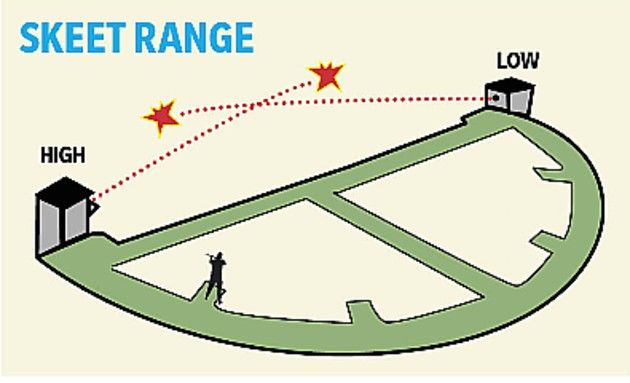What Is Another Name For Clay Targets?
Clay targets, also known as clay pigeons, are circular disks made of a mixture of pitch and pulverized limestone that are used as flying targets in the shooting sports of trap shooting, skeet shooting, and sporting clays. Clay targets are designed to simulate the flight of game birds when launched by specialized machines called traps and skeet houses. Shooters aim to break the clay targets with shotguns, testing their marksmanship skills. Clay targets have been used in shotgun shooting sports since the late 19th century as a replacement for live pigeon shooting. The name “clay pigeon” refers to their similarity to live pigeons originally used as targets. Today clay targets are a standard component of shotgun shooting sports at all levels, from recreational shooting to Olympic competition.
History
Clay target shooting originated as practice for live-pigeon shooting competitions. Live pigeon shooting was banned in the United Kingdom in 1921 on animal cruelty grounds. This led to the development of clay targets to replace live pigeons.[1]
The first clay targets were invented in 1880 by George Ligowsky of Cincinnati, Ohio.[2] Ligowsky developed clay discs that closely resembled live pigeons in flight. He patented his “clay pigeon” design in 1882. The first national clay target shooting competition was held in England in 1890 using Ligowsky’s clay pigeons.[1]
Trap and skeet shooting were the first competitive clay target shooting events. They originated in the United States in the early 1900s as practice for live-pigeon shoots. Sporting clays and Olympic shooting were later clay target shooting disciplines developed in the mid to late 1900s.[1]
Common Alternative Names

Clay targets have many slang or regional names, including:
- Clays
- Pigeons
- Birds
- Targets
- Skeebs
- Traps
- Disks
- Caps
- Doodads (in WordHippo)
These alternative names come from the history of clay target shooting as both a sport and hobby. Many names simply refer to the disk or bird-like shape of the targets. Regional names like “skeebs” derive from the popularity of clay shooting sports like skeet shooting in certain areas.
Reasons for Different Names
Clay pigeons, also known as clay targets, have been referred to by several different names over the years. According to Clay pigeon shooting – Wikipedia, this is largely due to regional and historical influences.
In the early days of the sport in England during the late 19th century, clay targets were simply referred to as “clay pigeons.” This name stuck in parts of the UK. However, when the sport spread to America, the targets became known as “clay birds.” This was likely because hunting live birds was much more common in the US at the time.
Later, as clay target shooting evolved into more formalized sporting disciplines like trap and skeet shooting, the term “clay target” became more popular. This helped distinguish the clay discs used in these sports from live pigeons. Regional preferences caused both terms to persist over time.
The different types of clay target shooting, such as trap, skeet, and sporting clays, also led to variances in terminology. For example, “clay bird” remains strongly associated with American trap shooting. Meanwhile, “clay target” is now the official term used in sporting clays worldwide and in governance of the Olympic shooting disciplines according to Why are clay pigeons called clay pigeons? – Quora.
So in summary, the various names like clay pigeon, clay bird, and clay target have their origins in regional dialects and the evolution of the shooting sport over the past century.
Trap Shooting
Trap shooting is a form of competitive clay target shooting where clay targets are launched from a single house or machine at varying angles, heights, and speeds. The targets, known as clay pigeons or clay birds in trap shooting, are standard 108mm diameter discs made from pitch and limestone designed to shatter when hit with gunshot (White Flyer).
In trap shooting, participants shoot clay targets released one at a time while standing at different stations arranged in a fan shape. The clay pigeons are propelled at speeds of up to 60 mph from a trap situated 15 yards in front of the shooting stations (Atlas Traps). Competitors attempt to shoot the airborne clay targets using a shotgun loaded with birdshot or lead shot before they disappear out of bounds.
The clay pigeons used in trap shooting serve as the targets for competitors to aim at and break using their shotguns. Trap range clay targets are designed to be sturdy enough to withstand the forces of the trap machine but brittle enough to shatter upon impact. Breaking a clay target in trap shooting requires skill, timing, and accuracy.
Skeet Shooting
Skeet shooting involves shooting clay targets known as clay pigeons or clay targets from different stations arranged in a semicircle. The targets are launched from two houses situated 40 yards apart at either side of the semicircle (Source: Amazon).
In a standard skeet shooting round, participants take turns shooting at 25 targets from 8 different stations. The targets are launched at high and low trajectories from the two houses. The shooter has to rotate through the stations and attempt to hit the fast moving targets being launched at varying angles and speeds (Source: White Flyer).
The clay pigeons used in skeet shooting are specially designed to withstand being thrown at high speeds from a skeet machine without breaking. They are made from a mixture of pitch and chalk formed into a concave disk shape. The light weight and aerodynamic design allows the clays to fly smoothly and consistently, providing a challenging target for shooters (Source: Walmart).
Sporting Clays
Sporting clays involves shooting clay targets that are launched in different trajectories to simulate the flight paths of game birds. The clays used in sporting clays can vary in size, shape and color to represent different types of birds. Some of the common clay target types used in sporting clays include:
Standard clays: These are the traditional round, flat circular clay targets either 4 1/8″ or 4 5/8″ in diameter commonly used in trap and skeet shooting. They can be launched as straight-aways, crossing, outgoing, incoming and rabbit targets to simulate various bird flight patterns (Academy – Clay Pigeons & Targets).
MIDI and mini clays: Smaller clays that are 3″ to 3 1/2″ in diameter used to simulate the flight of small birds like doves or quail. They are more challenging to hit than standard clays (Sportsmans Warehouse – Clay Targets).
Specialty clays: Realistically colored orange, black or brown clays designed to simulate game birds. They come in round, teardrop “battue” and irregular shapes (White Flyer).
Sporting clays provides variety by using different clay target sizes, shapes, colors and trajectories to represent the diverse types of game birds and flying patterns hunters may encounter in the field.
Olympic Shooting
Clay targets, often referred to as clay pigeons, are extensively used in the Olympic shotgun shooting events of skeet and trap. In both disciplines, participants aim to break clay discs flung into the air at high speeds. Skeet features targets launched from two fixed houses on either side of a semicircular range, while trap shooting involves clay pigeons released from a single trap house.
For the Olympic skeet event, competitors take shots at 4 stations arranged in a semicircle, attempting to break 25 targets in each round. Eight shots are taken at each station. Olympic skeet presents shooters with a wide variety of target trajectories – incoming, outgoing, crossing and vertical. Athletes require excellent reflexes and marksmanship to succeed.
Olympic trap shooting takes place with participants arranged in five shooting stations in a semicircle around a trap house. The clay targets are flung in a variety of unpredictable trajectories. Male trap shooters fire at 125 targets over 5 rounds, while women complete 3 rounds of 75 targets. Accuracy and consistency are vital to prevail in this extremely competitive event.
Clay targets used in Olympic shotgun disciplines are standardized by the International Shooting Sport Federation (ISSF). They must be 110mm in diameter, 25-26mm in height and weigh 105 grams. Uniform clay pigeons ensure fairness and prevent Variability in trajectories and breakability.
Clay Target Manufacturing
Clay targets, also known as clay pigeons, are most commonly made from a mixture of pitch and limestone. The raw materials are mixed together and compressed into molds to form the characteristic saucer shape of the targets. The targets are then ejected from the molds, dried, and fired in large kilns. This heating process sets the pitch mixture and gives the targets their solid form.
On an industrial scale, clay target manufacturing is an automated process. Machines mix the raw ingredients and compress them into molds on conveyor belts. The targets cure as they move through drying tunnels before entering the kilns. Fully automated systems can produce over 15,000 targets per hour.
The limestone provides the bulk and structural integrity of clay targets, while the pitch acts as a binding agent. The proportions can be adjusted to optimize target durability and flight characteristics. Other additives like antimony and dye may also be used. Overall, the manufacturing process for commercial clay targets has been finely tuned for consistency and performance.
For more details on industrial clay target production methods, see this patent on a fully automated manufacturing system.
Conclusion
Clay targets, also known as clay pigeons, have a rich history and importance in several shooting sports. While “clay pigeon” was the original and most common name, alternatives like clay target help distinguish the sport from hunting live birds. The sleek, aerodynamic disks are specially designed to mimic the flight of real birds, providing a challenging target for trap, skeet, and sporting clays shooting. Their bright colors and fragility when hit provide instant feedback to shooters. From the elaborate machines that launch them to the meticulous process of manufacturing them, clay targets have become an integral part of the shooting sports culture. Whether you call them clay pigeons, clay targets, or clay disks, these breakable flying objects continue to test the skills of shotgunners around the world.

